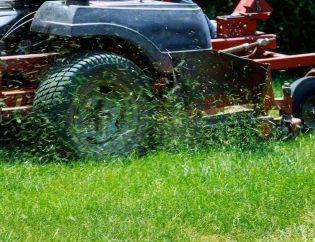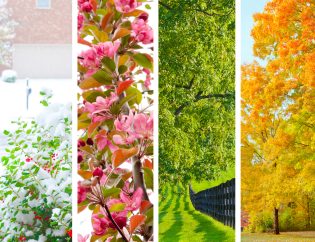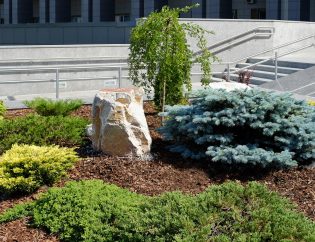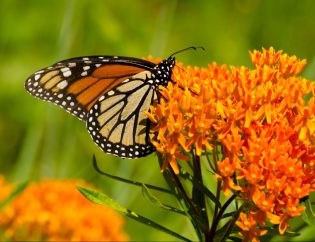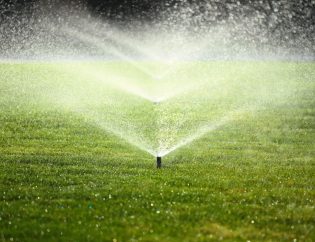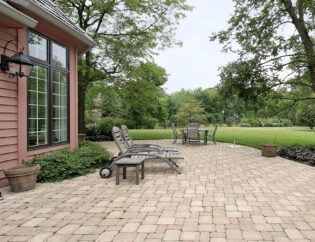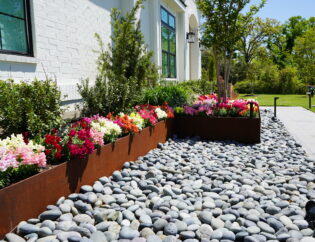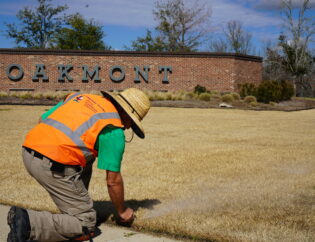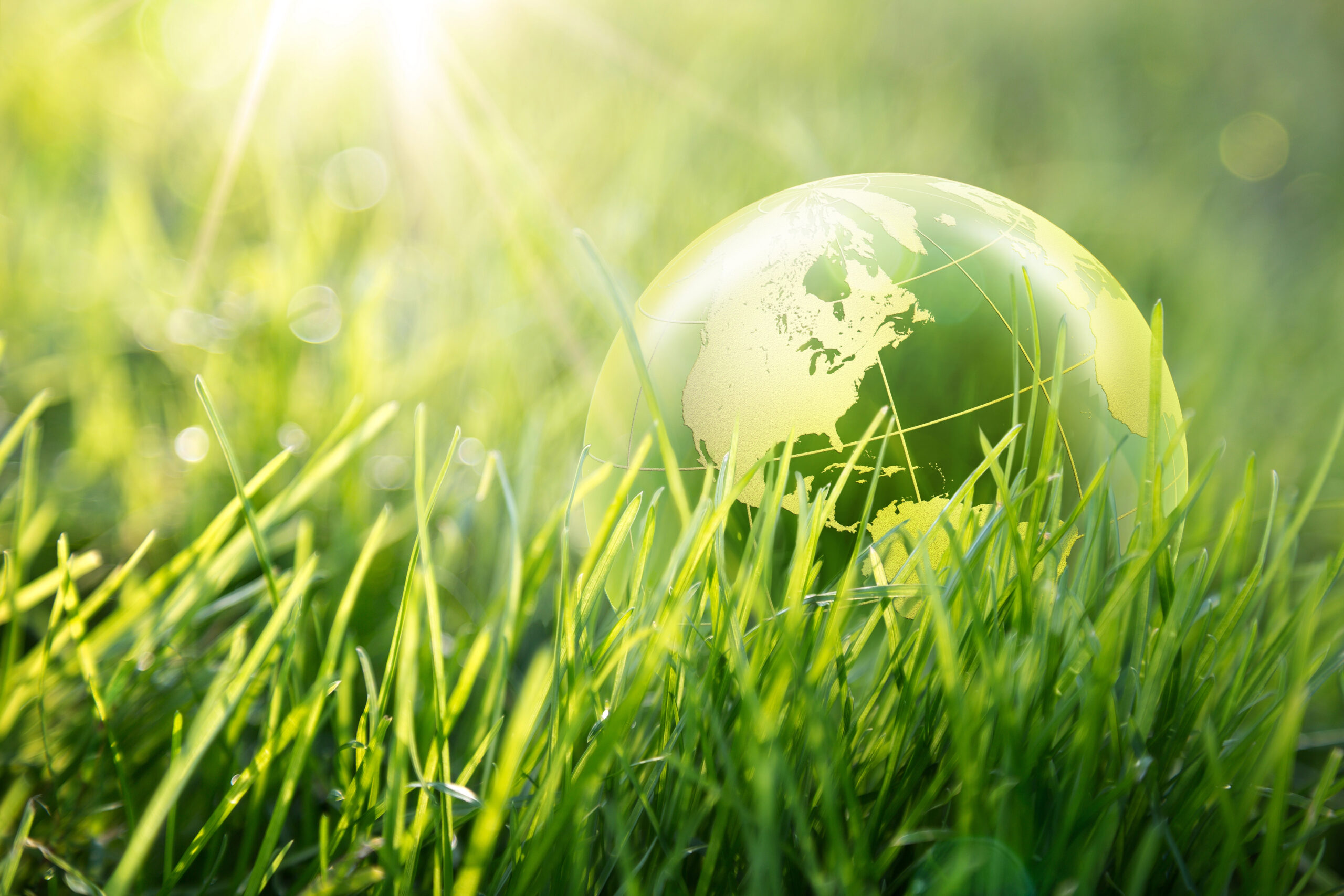
Eco-friendly landscaping is more than just a trend—it’s a smart and responsible way to create beautiful outdoor spaces while conserving resources and protecting the environment. With increasing concerns about water conservation, soil health, and biodiversity, sustainable landscaping practices are becoming essential for homeowners and property managers alike.
By incorporating eco-conscious design elements and using native plants, you can create a stunning landscape that thrives with minimal impact on the environment. Whether you live in the heart of Texas or another climate-conscious region, these sustainable landscaping ideas will help you build a greener, more resilient outdoor space.
1. The Principles of Eco-Friendly Landscaping
Sustainable landscaping isn’t just about planting trees and using less water—it’s about designing a landscape that works in harmony with nature. The key principles include:
- Water Conservation: Using drought-tolerant plants, smart irrigation, and rainwater collection to reduce water waste.
- Soil Health: Encouraging natural composting, mulching, and avoiding harmful chemicals.
- Biodiversity: Planting a variety of species to support local wildlife and pollinators.
- Energy Efficiency: Using strategic tree placement for natural cooling and outdoor lighting solutions that reduce electricity consumption.
- Waste Reduction: Minimizing lawn clippings, reusing garden waste, and incorporating recycled materials into hardscapes.
By following these principles, you can create a sustainable and visually appealing landscape that requires less maintenance and fewer resources.
2. Choose Texas Native Plants for a Resilient Landscape
One of the best ways to create an eco-friendly landscape is by using native plants. Texas native plants are naturally adapted to the local climate, requiring less water, fertilizer, and maintenance compared to non-native species.
Top Texas Native Plants for a Sustainable Landscape:
Drought-Tolerant Flowers & Shrubs:
- Black-eyed Susan (Rudbeckia hirta): A vibrant, low-maintenance wildflower that attracts butterflies.
- Texas Lantana (Lantana urticoides): Drought-resistant and perfect for adding a pop of color.
- Turk’s Cap (Malvaviscus arboreus): A shade-loving shrub that thrives in Texas heat.
Low-Maintenance Grasses & Groundcovers:
- Buffalo Grass (Buchloe dactyloides): A water-efficient, slow-growing alternative to traditional lawns.
- Gulf Coast Muhly (Muhlenbergia capillaris): An ornamental grass with stunning pink plumes.
- Creeping Juniper (Juniperus horizontalis): A drought-tolerant ground cover that prevents soil erosion.
By incorporating these resilient species, you can enjoy a lush, green landscape while using fewer natural resources.
3. Smart Irrigation Strategies for Water Conservation
Water is one of the most valuable resources in landscaping, and using it efficiently is a cornerstone of sustainable gardening.
Tips for Eco-Friendly Irrigation:
- Install Drip Irrigation: Delivers water directly to plant roots, reducing evaporation and waste.
- Use Rain Barrels: Collect rainwater for use in gardens, reducing dependency on municipal water.
- Water in the Early Morning or Evening: Minimizes evaporation and ensures deeper root absorption.
- Group Plants by Water Needs: This practice, known as hydrozoning, ensures efficient water use.
By implementing these irrigation strategies, you can maintain a thriving landscape without excessive water use.
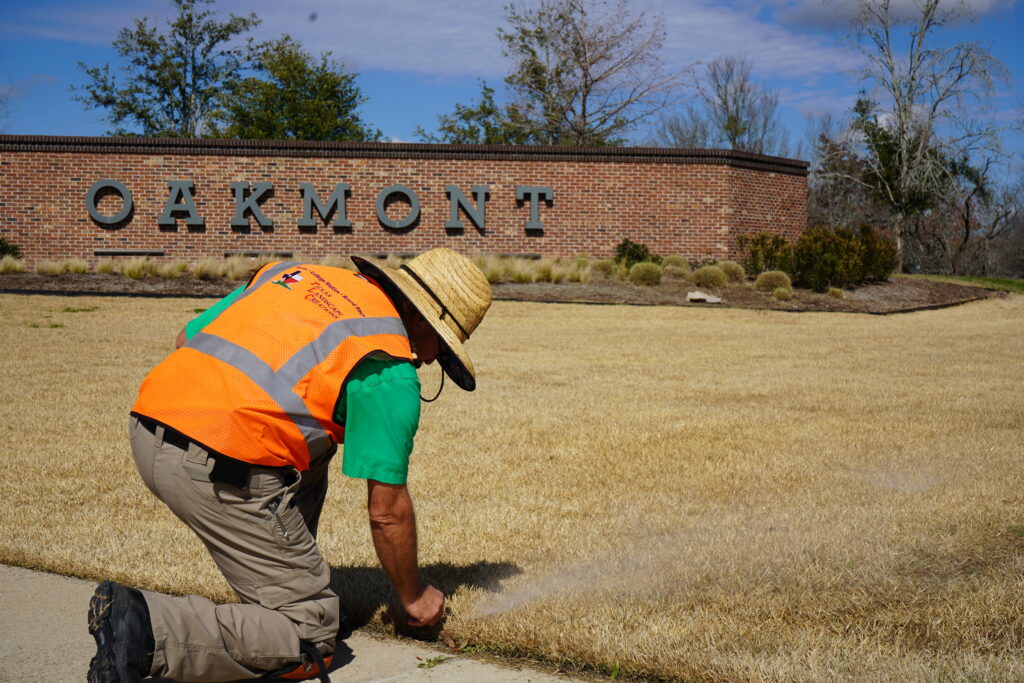
4. Reduce Lawn Areas for a More Sustainable Yard
Traditional lawns require significant amounts of water, fertilizers, and maintenance. Reducing turf areas and replacing them with eco-friendly alternatives can save time, money, and resources.
Sustainable Lawn Alternatives:
- Native Grasses: Opt for Buffalo Grass or Zoysia Grass, which require less mowing and watering.
- Hardscaping Features: Use gravel pathways, stone patios, or decorative rock gardens to minimize grass areas.
- Wildflower Meadows: A mix of native wildflowers provides beauty while supporting pollinators.
Not only will these alternatives reduce your environmental impact, but they’ll also add unique texture and interest to your landscape.
5. Composting & Mulching for Soil Health
Healthy soil is the foundation of an eco-friendly landscape. Composting and mulching are two effective ways to enrich soil while reducing waste.
Benefits of Composting:
- Reduces food and garden waste by turning it into nutrient-rich soil.
- Improves soil structure and moisture retention.
- Reduces the need for synthetic fertilizers.
Best Mulching Practices:
- Organic Mulch (Wood Chips, Leaves, Bark): Helps retain moisture, suppress weeds, and improve soil health.
- Gravel or Stone Mulch: A long-lasting option for xeriscaping (low-water landscaping).
- Grass Clippings: Instead of bagging, leave clippings on the lawn to decompose naturally and add nutrients.
By incorporating compost and mulch into your landscape, you can create healthier plants while minimizing the need for chemical fertilizers.
6. Sustainable Hardscaping & Eco-Friendly Materials
Hardscaping features like patios, walkways, and retaining walls can be designed with sustainability in mind.
Eco-Friendly Hardscaping Ideas:
- Permeable Pavers: Allows rainwater to seep into the ground, reducing runoff.
- Reclaimed Wood & Recycled Materials: Use salvaged bricks, stones, or repurposed materials for decking and fencing.
- Solar-Powered Outdoor Lighting: Reduces electricity use while enhancing nighttime aesthetics.
By choosing sustainable materials, you can create a functional and stylish outdoor space that’s also environmentally responsible.
7. Supporting Pollinators & Local Wildlife
A truly eco-friendly landscape should be inviting not just for humans, but also for beneficial insects, birds, and wildlife.
Ways to Support Pollinators & Wildlife:
- Plant Milkweed & Nectar-Rich Flowers: Essential for butterflies, including the endangered Monarch butterfly.
- Install Birdhouses & Bee Hotels: Provides shelter for important pollinators and insect-eating birds.
- Create a Small Water Feature: A shallow birdbath or pond offers drinking water for wildlife.
By incorporating these elements, you’ll contribute to biodiversity while enjoying a more dynamic and vibrant outdoor space.
8. Reduce Chemical Use for a Healthier Environment
Chemical pesticides, herbicides, and synthetic fertilizers can harm soil, water supplies, and wildlife. Instead, opt for natural alternatives.
Eco-Friendly Lawn & Garden Care:
- Use Organic Fertilizers: Compost, manure, and bone meal provide slow-release nutrients.
- Try Natural Pest Control: Introduce ladybugs and praying mantises to control harmful insects.
- Use Vinegar or Boiling Water for Weed Control: A safe and effective alternative to chemical herbicides.
Minimizing chemical use not only protects the environment but also creates a healthier space for pets, children, and wildlife.
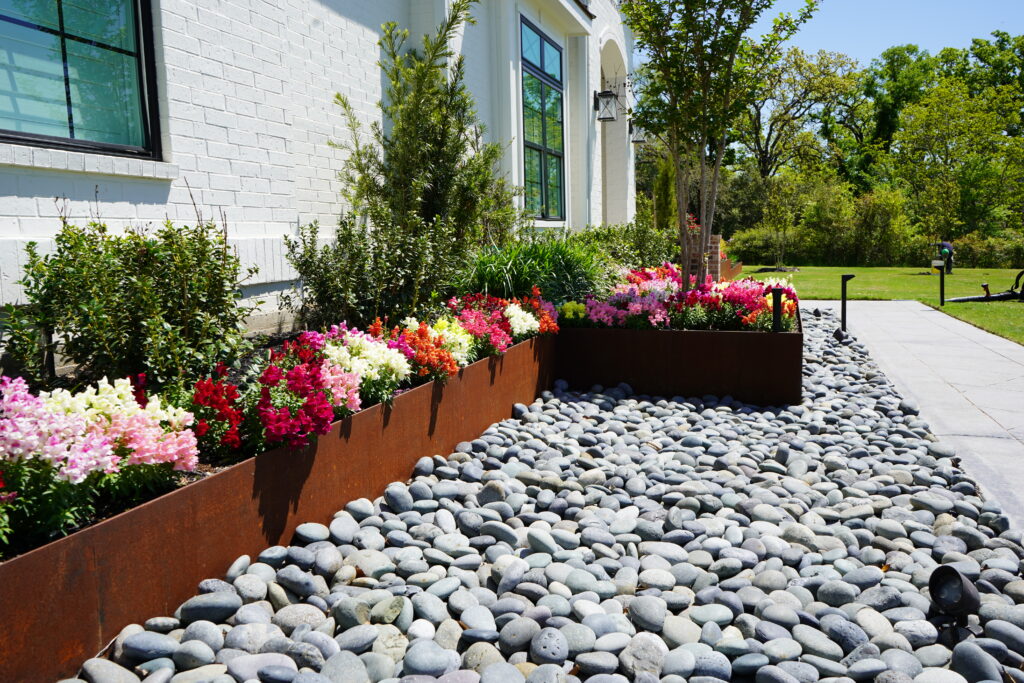
Final Thoughts: Creating a Sustainable Landscape That Lasts
Eco-friendly landscaping isn’t just good for the planet—it’s also practical, cost-effective, and beautiful. By incorporating Texas-native plants, reducing water waste, improving soil health, and choosing sustainable materials, you can create a resilient outdoor space that thrives with minimal impact on the environment.
At Texas Landscape Creations, we specialize in designing sustainable landscapes that are both functional and breathtaking. Whether you’re looking to implement drought-tolerant gardens, install smart irrigation, or revamp your outdoor space with eco-friendly features, we’re here to help.
Ready to Transform Your Landscape?
📞 Call us today
Start your journey toward a greener, more sustainable outdoor space today!


